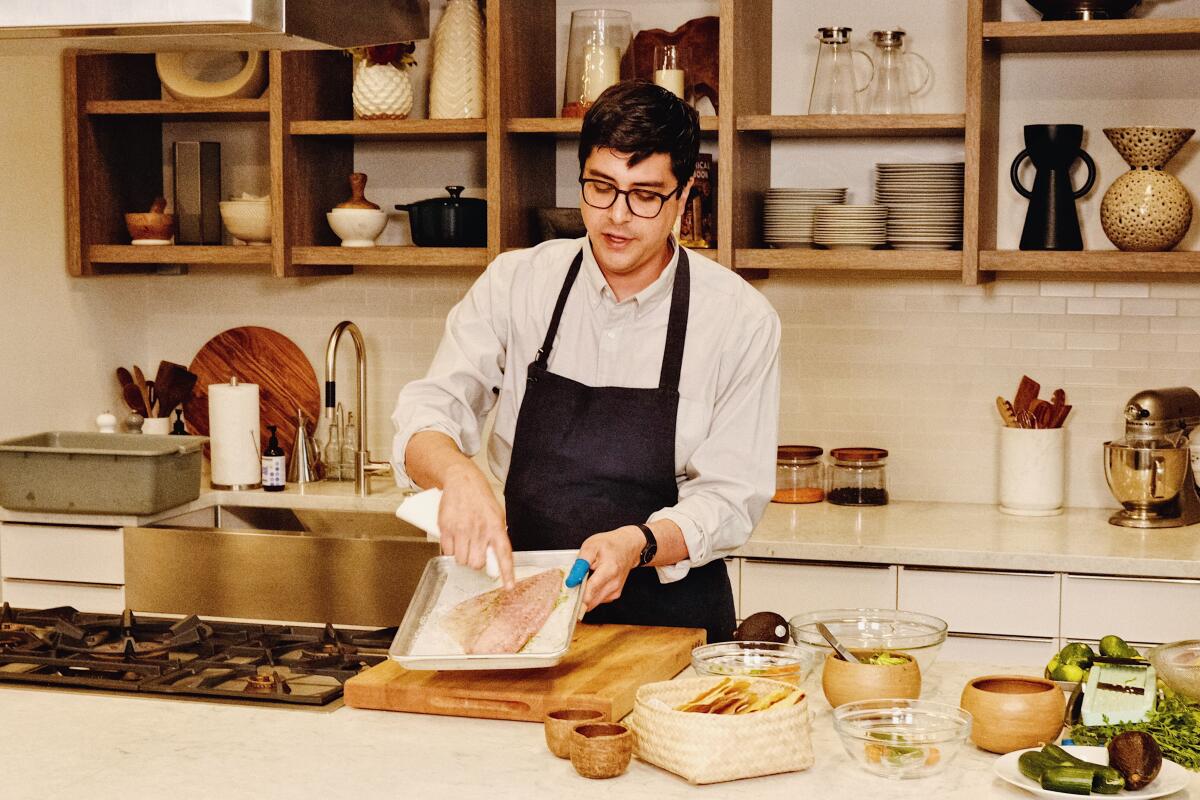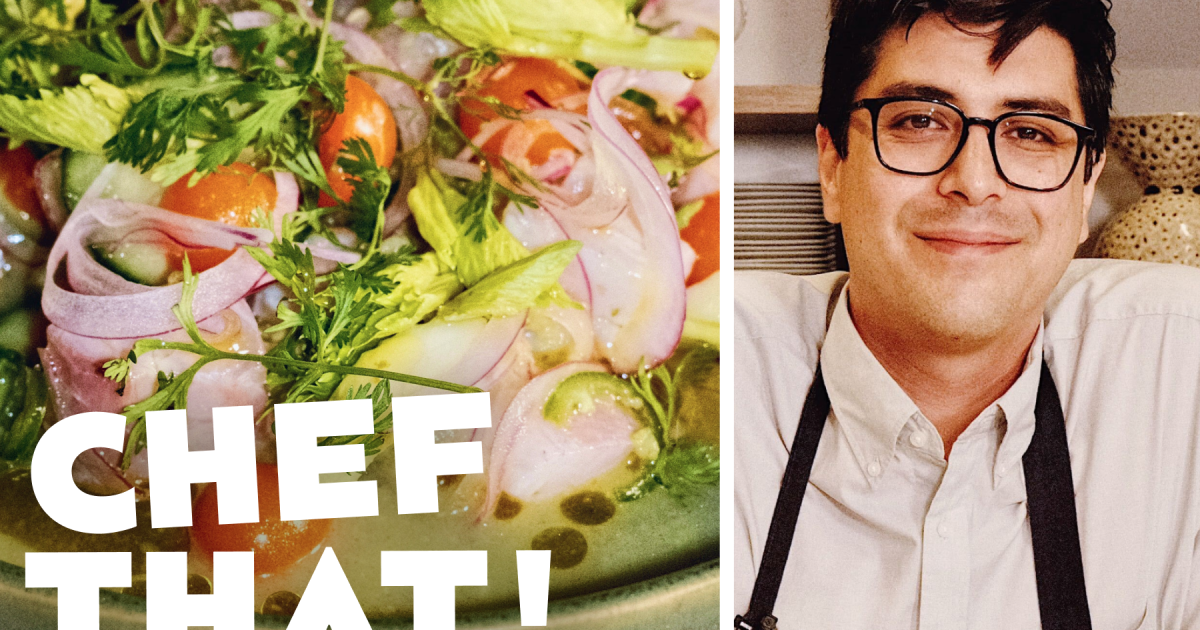When it comes to making ceviche, “it’s supposed to be a lot of fun,” says Jesús “Chuy” Cervantes, chef de cuisine at Damian in downtown Los Angeles’ Arts District.
It's a dish the Mexican fine-dining restaurant has had on its menu since opening in the fall of 2020, though the ingredients change with the seasons.
“It's usually something you drink in a festive atmosphere, or maybe for a hangover, which means you've had a festive night,” Cervantes says.
Here are Cervantes' tips for preparing the best ceviche possible.
The star ingredient of any ceviche is fish. “Typically, a white-fleshed, softer fish is used that can handle the vegetables, but also melts a bit into the citrus juice and is soft enough to enjoy with the other vegetables incorporated into the dish.”
Cervantes used a Baja California kanpachi fillet, but the main priority is to buy fresh fish from local fishermen and markets. When selecting a fish, make sure it doesn't have any discolorations, strange cuts or anything that indicates it was injured during its capture.
“The way to check is if there are broken pieces in the meat or pieces that look like blood inside,” says Cervantes. “That could indicate that the product is not of the desired quality.”
1
2

1. Chef de cuisine Damian Chuy Cervantes uses a kampachi fillet for this ceviche, but you can use any locally sourced white-fleshed fish that can handle the vegetables but will soften enough in the citrus marinade to be enjoyed with the avocado and other vegetables on the plate. 2. Cervantes “cures” the fish with sugar, salt and lime zest. (Stephanie Breijo/Los Angeles Times)
Next, cure the fish with sugar, salt and lime zest. Stir the mixture until smooth and a fine powder forms. Coat both sides of the fish generously and place in the refrigerator to cure.
“The idea with curing is to release as much moisture as possible from the fish while also giving it flavour, so that the texture is firmer in the end,” says Cervantes.
Cervantes recommends using red onions in ceviche. “It has a little more flavor, a little more heat, and in the end it mellows out and has that sweetness that we all love. White onion tends to get lost a little bit.”
Celery is also loved for ceviche. Use the inner part of the stalk which is tender and less fibrous than the outer ribs. The leaves can be used as a garnish.
As a general rule, no ingredient should be larger than the fish. “The fish should be the focal point of our ceviche,” says Cervantes.
The avocado is the only ingredient that is cut the same size as the fish. This allows the avocado cubes to contrast with the texture of the fish, Cervantes says. When selecting an avocado, make sure it is firm, not too soft, and without any dimples or bruises. The chef recommends removing the stem to check the ripeness of the fruit. If it is bright green, it needs more time. If the color looks ripe, then it is fully ripe.
Young ginger, which is less fibrous and sweeter than ginger grown toward the end of the season, is preferred for ceviche. But if you can't find young ginger, you can also boil it, which will remove the astringent taste.
Once the fish is ready, remove the seasoning and cut it into strips, making sure to remove the dark muscle known as the “blood line,” which runs close to the blood that flows along the spine of the fish. It’s fine to eat, but it imparts a fishy flavor that can overpower the ceviche.
When mixing the ingredients for the ceviche, stir the olive oil vigorously with a pinch of salt until it emulsifies. This way, when you add the lemon juice, the oil will not separate from the citrus.
This style of fresh ceviche is best made on the spot and shouldn’t be left to sit out too long. “The lemon juice will not only cook the fish, but it will also start to soften the rest of the vegetables and you won’t get that crispy, delicious ceviche we like,” says Cervantes.
After garnishing with celery leaves and cilantro, serve the ceviche with salsas, nachos, crackers, or on a tostada. Or do as Damian's chef and owner Enrique Olvera does and eat it in a tortilla like a taco.
Time 25 minutes plus 1 hour curing time
Performances Serves 2 people
Don’t miss Damian at Food Bowl on Sunday, September 22, from noon to 3 p.m., on the Paramount Pictures Studios backlot.












